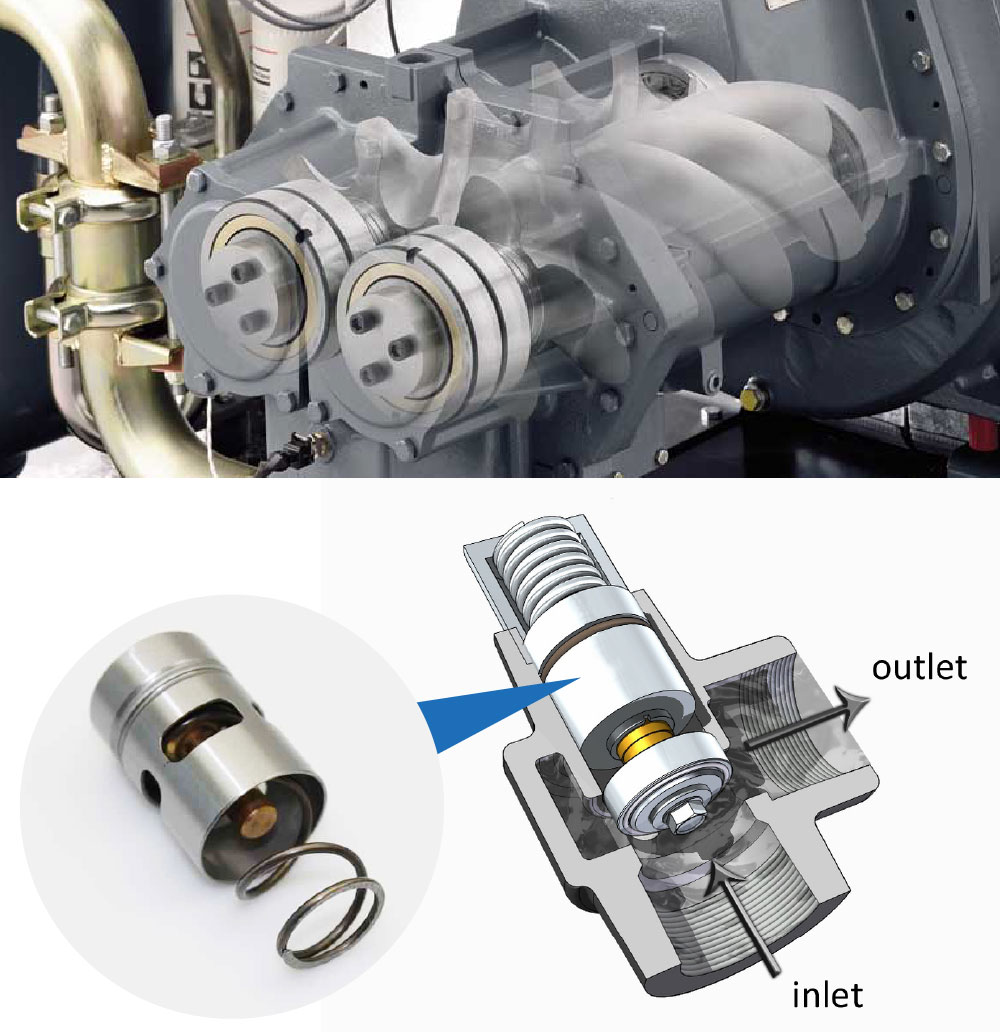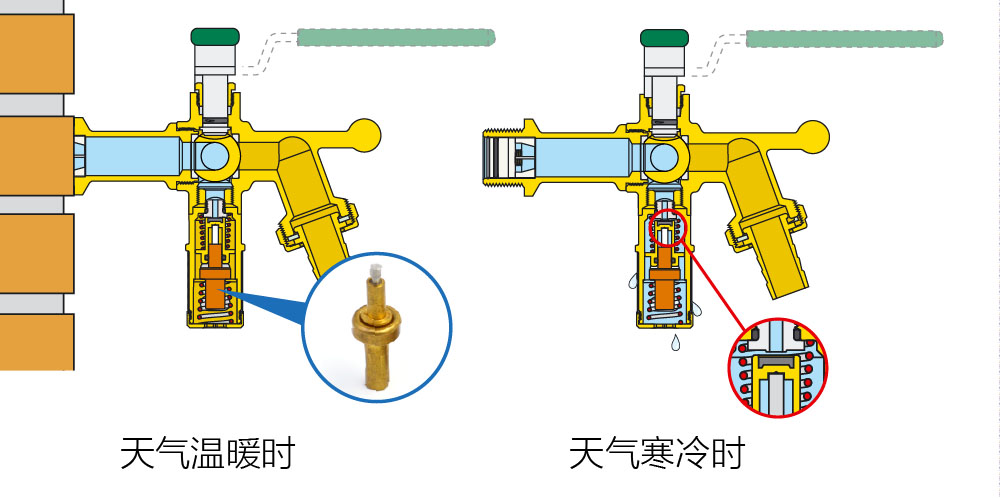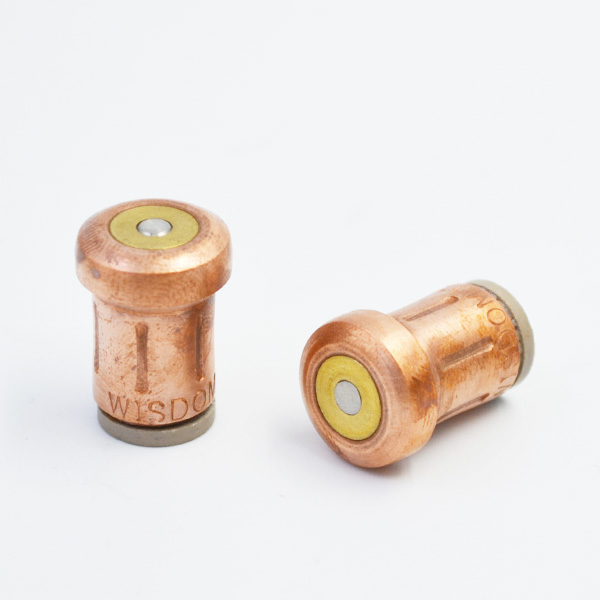The equipment of atomic lithography system is huge and complex, so the parameters of temperature and frequency stabilized light need to be monitored and controlled during the experiment. In view of the low efficiency of the experiment caused by the use of personnel on duty, the principle of atomic deposition and the structure and main functions of the atomic deposition experimental device are introduced. The temperature control scheme and the differential signal data acquisition scheme of frequency-stabilized light in the atomic deposition experimental device are proposed. The temperature control system automation of atomic lithography system and the remote control of laser frequency stabilization system are realized by automatically collecting and recording experimental data such as temperature signal and frequency stabilization optical signal. This scheme not only improves the experimental efficiency, but also has certain reference value for USB developers and automation researchers. Atomic lithography system has a large and complex equipment, and many parameters need to be monitored and controlled in the experimental process. At present, people are mostly on duty to control the equipment, resulting in low utilization of human resources [1]. The automation and remote control of the experimental device can not only liberate people from heavy physical and mental work and complex working environment, but also bring great convenience for expanding the scale of research, improving the efficiency of research and realizing the whole process control of experiment. The temperature control of atomic furnace in atomic lithography system is accomplished by a temperature control loop, as shown in Figure 1. Firstly, set the temperature you want to reach, the setting value is expressed by SP value, and the actual temperature (PV value) is connected to the input of the instrument. The actual temperature is compared with the set value, and the output value is calculated according to the deviation. The output of the controller is connected to the actuator to control heating or cooling to regulate the controlled object. The effect of regulation can be further adjusted by feeding back the measured temperature to the controller, which is a control loop [3]. In the research of temperature control system of atomic furnace, the parameters needed to be completed are: setting of PV value, setting of SP value, setting of PID parameter and editing of program [4]. In the whole temperature control loop, the key is to compare the actual temperature with the set value, and then calculate the output value according to the deviation, so as to adjust the loop to control heating. In the temperature control system of atomic furnace, the output of proportional term is proportional to the deviation. When the ratio band is 10 C, the deviation is 3 C, the output is 30%. When the deviation is 10 C, the output is 100%. Separate proportional control can usually stabilize the process value on a certain straight line, but there will be a certain deviation from the set value, when the output power is exactly equal to the heat dissipation. In the temperature control loop of atomic furnace, integral control is mainly used to eliminate static deviation. During the duration of deviation, static deviation can be eliminated by increasing or decreasing output. The speed of output increase or decrease is determined by integration time, and the speed should not be too fast to avoid oscillation. The differential term is proportional to the rate of change of process value, but in the opposite direction. In the temperature control system of atomic furnace, it is mainly used to prevent positive and negative overshoots. In addition, the differential term has another use in the whole loop control: if the process value decreases rapidly (e.g. when the furnace door is opened), the differential term can restrain the effect of proportional integral and reduce the overshoot after the furnace door is closed [5].
Differential terms can be calculated according to the rate of variation of PV or the rate of variation of deviation. The PID parameter is used to stabilize the process value at the set point in the case of small deviation. High and low overshoot parameters are used to suppress overshoot in case of large deviation. They are the action points above or below the set value respectively. When the process value reaches this point and approaches the set value, the output begins to increase or decrease. In the Eurotherm 3504 atomic furnace, there is a program giver. By compiling and setting the program above, a time-varying setting value can be generated. Program giver is often used for temperature control. It can let the temperature climb to one value at a certain rate. After holding for a certain time, it climbs to another temperature at another rate and holds for a certain time, and continues until the end. When the SP value is set, the heating equipment will heat the atomic furnace, and the actual temperature PV value will be monitored by the programmer in real time. In the initial heating stage, the PV value can not keep up with the change of SP value, so there will be waiting, SP value in the heating waiting process of reciprocating, at this time PID control to adjust and control the two heating processes, so that the PV value in a relatively short period of time can change according to the change of SP value, so as to achieve the desired heating state. In addition, when the SP value reaches the expected temperature, it will stop and remain unchanged. At this time, the heating of PV value will continue, thermostatic element so there will be a certain overshoot phenomenon. PID control once again plays a modulation role, so that the PV value can quickly reach the stable target temperature through a process of adjustment. As shown in Figure 2, the experimental results of automatic heating of atomic furnace show that the straight line is the upper limit of automatic heating of atomic furnace at 30 C/min. The automatic heating process must not exceed the straight line, otherwise the atomic furnace will be burnt out. Solid curve is the real-time test result of automatic heating of atomic furnace. The curve drawn by the test result of one test data every 15 minutes is the actual law of temperature change after automatic heating. Since the PID control is in the adjustment stage, the heating rate is relatively slow. After about 20 minutes, the PV value and SP value reach the same heating rate. The heating process increases linearly. The heating rate and time are in line with the experimental requirements.

When the target temperature reaches 1 650 (?) C, the PV value reaches stability and remains unstable. Change. Data acquisition and monitoring system of atomic lithography system is shown in Fig. 3. Differential frequency stabilization signals in atomic lithography system have been converted into electrical signals by sensors and transmitted by BNC head. The design of data acquisition system requires not only acquisition and display of signal values and waveforms, but also alarm when the frequency stabilization signal exceeds the range shown by dashed lines.

Therefore, the functions of the data acquisition system need to be designed are: data acquisition (converting analog signals collected by sensors into digital signals), data monitoring and display (transmitting data back to the host computer for real-time display). Considering compact and portable, low cost, simple circuit structure and easy secondary development, CY7C68013A encapsulated by 56? PinSSOP is selected in this system. The chip supports USB 2.0 protocol. Selection of A/D converter: Because the input range of the frequency-stabilized signal that the system needs to collect is – 200-200 mV, and the frequency is low, in order to simplify the design of circuit board, the input range of A/D converter is the first factor to be considered. At the same time, it meets the working characteristics of CY7C68013A chip high-speed USB 2.0 and improves the applicability of the system. The system uses the A/D converter MAX1308 [8], which has high resolution, fast sampling rate and input range of -5-5 V.

CY7C68013A needs 3.
3 V power supply, MAX1308 needs 2.7-5.25 V power supply, and 24LC64 needs 2.5-5.5 V power supply. According to the actual situation, the power supply mode of the system is selected by the system jumping pin. The system uses two kinds of power supply schemes, the external power supply scheme and the bus power supply scheme. Any power supply mode can be selected to supply power for the system module [9]. CY7C68013A chip needs 3.3 V voltage as its normal working voltage, and can meet the power supply range of MAX1308 and 24LC64, so it only needs to reduce the 5 V voltage supplied by bus power supply to 3.3 V. LT1763? 3.3 power conversion chip is used in the circuit, which can directly convert 5V step-down to 3.3V. On the basis of hardware circuit design, the function of the system is mainly realized by software. System software design includes firmware programming, driver design and upper application program design. The enhanced 8051 processing unit in the chip CY7C68013A acts as a microprocessor to process the request and return data of the corresponding equipment. Firmware is the corresponding program that runs on the device side in order to make it work normally and need corresponding software support. The system needs to write corresponding firmware programs for different USB devices to complete the corresponding requests and data processing. USB endpoint configuration. CY7C68013A chip has seven endpoints, namely EP0, EP1OUT, EP1IN, EP2, EP4, EP6 and EP8. In order to meet the requirements of different bandwidth conditions, according to the actual needs of users, endpoints 2,4,6,8 are further configured as double, triple or quadruple buffers of OUT or IN. According to the design requirements, the firmware development only uses three endpoints, EP0, EP2 and EP6. These endpoints and the corresponding registers are set in the TD_Init() function. GPIF design and implementation. GPIF in CY7C68013A selected in this paper provides a set of control output signals CTL [2.0], a set of peripheral input signals RDY [1.0], FIFO flags in FX2LP and four user-defined waveform descriptors, which are usually defined as FIFO reading, FIFO writing, word/byte reading, word/byte writing, but can also be any combination of these four control waveforms. The logic combination of input signal and output signal can realize all kinds of complex sequential logic. USB chips adopt “GPIF master mode” single byte write (SnglWR), single word read (SnglRD) to achieve the read/write control of A/D. According to the previous hardware design, the sampling pins RDY0 of the control chip are connected to A/D EOC, RDY1 is connected to A/D EOLC, and the pins CTL0, CTL1 and CTL2 are connected to A/D CONVST and RD/WR respectively. Next is the compilation of the timing control waveform and the jump of the state, and the duration of the timing is in IFCLK cycle. The development of the whole firmware program will be completed under Keil C. The firmware program will be downloaded directly on the PC by using the firmware download interface provided by CYPRESS company through USB line. In this experiment, we adopt a simple and fast method to develop the application system of USB interface, that is, to develop the application program that can drive the user’s USB system directly in LabVIEW environment through NI? VISA, which completely avoids the complexity of developing the USB driver before, and greatly shortens the development cycle [10]. The development of host computer interface is realized by using VI sub-nodes in LabVIEW template matched with Nl? VISA. Figure 4 is the flow chart of host computer interface. When a USB device is connected to a PC, the PC has the opportunity to check whether there is a USB device.
If the PC displays an unrecognizable USB device, it needs to reinstall the USB driver. If the USB device can pass the test smoothly, it begins to select the channel for AD. The data acquisition system in the atomic lithography system can meet the demand with only one channel. Mobile AD collects and transmits data. Data will be compared with the given value in the process of real-time display. It monitors whether the collected data exceeds the limited voltage range. If the data is within the given value range, there will be no alarm display. Otherwise, there will be red alarm light warning. The data acquisition system is tested in the experiment. Sinusoidal wave is input by signal generator.

The alarm upper limit is 0.2 V and the lower limit is -0.2 V. The schematic diagram of data acquisition is shown in Fig.
5. Graphic display data acquisition system can collect real-time voltage values well, and the waveform displayed is the same as the signal waveform emitted by the signal generator. When the upper and lower limits of the alarm are exceeded, the alarm lamp turns red and the alarm is issued. After repeated testing of the signal generator, the data acquisition system can meet the use conditions.
In the experiment, the frequency-stabilized light is basically stable at about 0 V, and the alarm system shows green, indicating that the data does not exceed the alarm upper and lower limits. It is an ideal frequency-stabilized light signal. The data collected by the data acquisition system is compared with the data collected by PCI data acquisition card. Under the condition of simultaneous acquisition, the experimental curves and data agree with each other, and the consistency of the results reaches 99%. The system can be completely satisfied.
